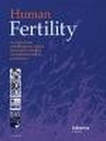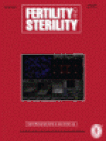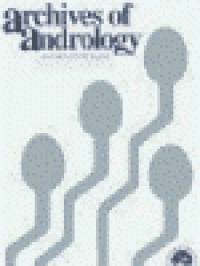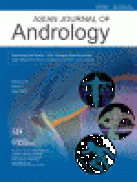USE OF ACUPUNCTURE BEFORE AND AFTER EMBRYO TRANSFER
This report describes outcomes for all patients who attended the London Bridge Fertility, Gynaecology, and Genetics Centre in London over a two-year period and who had acupuncture. In the acupuncture group, positive pregnancy rates/ET were 44.6% comparing favourably with the non-acupuncture historic control group. When they analysed outcomes in different age groups, they discovered that acupuncture intervention was particularly effective in woman in the 35-39 and the over 40 groups. Abstract "Use of Acupuncture Before and After Embryo Transfer" Nick Dalton-Brewer, David Gillott, Nataly Atalla, Mohamed Menabawey, Pauline Wright, & Alan Thornhill The London Bridge Fertility, Gynaecology and Genetics Centre, London, UK All IVF cases in which acupuncture was administered before and after embryo transfer at a large private infertility centre were reviewed for a 2-year period. All patients were treated by the same practitioner (NDB) using Traditional Chinese Acupuncture (TCA). Patients received acupuncture to the protocol developed by Paulus, W.E., Zhang, M., Strehler, E., El-Danasouri, I., and Sterzik, K. (2002). Influence of acupuncture on the pregnancy rate in patients who undergo assisted reproduction therapy. Fertility & Sterility, 77, 721–724: Liver 3, Spleen 8, Stomach 29, Pericardium 6, GV 20 were manually stimulated five times over a 40-min period, at Bridge, approximately 10–20 minutes prior to embryo transfer. Embryo transfer was carried out under ultrasound guidance as per routine at Bridge. Ten minutes following embryo transfer acupoints Spleen 6, Stomach 36, Spleen 10, Large Intestine 4 were manually stimulated five times over a 40-min period before discharging the patient. Ear points 34, 55 and 58 were used in both treatments and not stimulated. A total of 71 patients underwent 74 cycles involving acupuncture before and after embryo transfer. Overall, positive pregnancy rates/ET were 44.6% comparing favourably with the non-acupuncture historic control group. When analysed by maternal age at time of treatment, biochemical pregnancy results for acupuncture treated women were as follows: <35 years−52%; 35–39 years – 45%; 40–45 years – 35%. Results for women aged 35–39 years and those over 40 years were markedly better than controls suggesting that acupuncture intervention of this type may be more effective in older women. No side effects or complications were experienced by women receiving acupuncture. Acupuncture is a safe, adjunct therapy in IVF and in other randomised clinical trials has been shown to significantly improve outcomes when used at the IVF centre before and after embryo transfer. Our preliminary data are encouraging and suggest that a trial involving older women may be effective.
TRANSCUTANEOUS ELECTRICAL ACUPOINT STIMULATION IMPROVES THE OUTCOMES OF IN VITRO FERTILIZATION
TRANSCUTANEOUS ELECTRICAL ACUPOINT STIMULATION IMPROVES THE OUTCOMES OF IN VITRO FERTILIZATION: A PROSPECTIVE, RANDOMIZED AND CONTROLLED STUDY.
Qu F, et al. Explore (NY). 2017 Sep - Oct.
Show full citation
Abstract
OBJECTIVES: To explore whether transcutaneous electrical acupoint stimulation (TEAS) can improve the outcomes of in vitro fertilization (IVF).
DESIGN: A prospective, randomized, and controlled study.
SETTING: IVF center in a university hospital.
PARTICIPANTS: Four hundred and eighty-one infertile patients with bilateral tubal blockage who were referred for IVF. Patients were randomized into four groups.
INTERVENTION: TEAS was administered for 30min, respectively, at 24h before TVOR and two hours before ET. The acupoints included SP10 (Xuehai, bilateral), SP8 (Diji, bilateral), LR3 (Taichong, bilateral), ST36 (Zusanli, bilateral), EX-CA1 (Zigong, bilateral), RN4 (Guanyuan), PC6 (Neiguan, bilateral), and RN12 (Zhongwan). Based on different frequencies of TEAS, patients were grouped into a TEAS-2Hz group, a TEAS-100Hz group and a TEAS-2/100Hz group. Patients in the control group only received routine IVF treatment and no TEAS was applied on them.
PRIMARY AND SECONDARY OUTCOME MEASURES: The number of mature oocytes, normally fertilized oocytes and good-quality embryos were used to evaluate oocyte developmental competence of the patients. Data of clinical pregnancy rate (CPR), implantation rate (IR), and live birth rate (LBR) were also obtained. The levels of neuropeptide Y (NPY), transforming growth factor alpha and granulocyte colony-stimulating factor in the follicular fluids were measured with enzyme-linked immunosorbent assay (ELISA).
RESULTS: No significant differences were found between the control, TEAS-2Hz, TEAS-100Hz and TEAS-2/100Hz groups on the numbers of metaphase II oocytes, normally fertilized zygotes, early cleavage embryos or good quality embryos (P > .05). However, the CPR, IR and LBR of the TEAS-2/100Hz group were significantly higher than those of the other groups, respectively (P < .05). The NPY levels in the follicular fluids of TEAS-2/100Hz group were significantly higher than those of the other groups (P < .05).
CONCLUSION: TEAS using a frequency of 2/100Hz could help to improve the IVF outcomes partly by increasing NPY levels in the follicular fluids.
Copyright © 2017 Elsevier Inc. All rights reserved.
Author:
Qu F, et al. Explore (NY)
Publication Date:
2017 Sep
Publisher:
Elsevier Inc.
Section:
IVF
Qu F, et al. Explore (NY). 2017 Sep - Oct.
Show full citation
Abstract
OBJECTIVES: To explore whether transcutaneous electrical acupoint stimulation (TEAS) can improve the outcomes of in vitro fertilization (IVF).
DESIGN: A prospective, randomized, and controlled study.
SETTING: IVF center in a university hospital.
PARTICIPANTS: Four hundred and eighty-one infertile patients with bilateral tubal blockage who were referred for IVF. Patients were randomized into four groups.
INTERVENTION: TEAS was administered for 30min, respectively, at 24h before TVOR and two hours before ET. The acupoints included SP10 (Xuehai, bilateral), SP8 (Diji, bilateral), LR3 (Taichong, bilateral), ST36 (Zusanli, bilateral), EX-CA1 (Zigong, bilateral), RN4 (Guanyuan), PC6 (Neiguan, bilateral), and RN12 (Zhongwan). Based on different frequencies of TEAS, patients were grouped into a TEAS-2Hz group, a TEAS-100Hz group and a TEAS-2/100Hz group. Patients in the control group only received routine IVF treatment and no TEAS was applied on them.
PRIMARY AND SECONDARY OUTCOME MEASURES: The number of mature oocytes, normally fertilized oocytes and good-quality embryos were used to evaluate oocyte developmental competence of the patients. Data of clinical pregnancy rate (CPR), implantation rate (IR), and live birth rate (LBR) were also obtained. The levels of neuropeptide Y (NPY), transforming growth factor alpha and granulocyte colony-stimulating factor in the follicular fluids were measured with enzyme-linked immunosorbent assay (ELISA).
RESULTS: No significant differences were found between the control, TEAS-2Hz, TEAS-100Hz and TEAS-2/100Hz groups on the numbers of metaphase II oocytes, normally fertilized zygotes, early cleavage embryos or good quality embryos (P > .05). However, the CPR, IR and LBR of the TEAS-2/100Hz group were significantly higher than those of the other groups, respectively (P < .05). The NPY levels in the follicular fluids of TEAS-2/100Hz group were significantly higher than those of the other groups (P < .05).
CONCLUSION: TEAS using a frequency of 2/100Hz could help to improve the IVF outcomes partly by increasing NPY levels in the follicular fluids.
Copyright © 2017 Elsevier Inc. All rights reserved.
Author:
Qu F, et al. Explore (NY)
Publication Date:
2017 Sep
Publisher:
Elsevier Inc.
Section:
IVF
INFLUENCE OF ACUPUNCTURE ON THE PREGNANCY RATE IN PATIENTS WHO UNDERGO ASSISTED REPRODUCTION THERAPY
Abstract
OBJECTIVE: To evaluate the effect of acupuncture on the pregnancy rate in assisted reproduction therapy (ART) by comparing a group of patients receiving acupuncture treatment shortly before and after embryo transfer with a control group receiving no acupuncture.
DESIGN: Prospective randomized study.
SETTING: Fertility center.
PATIENT(S): After giving informed consent, 160 patients who were undergoing ART and who had good quality embryos were divided into the following two groups through random selection: embryo transfer with acupuncture (n = 80) and embryo transfer without acupuncture (n = 80).
INTERVENTION(S): Acupuncture was performed in 80 patients 25 minutes before and after embryo transfer. In the control group, embryos were transferred without any supportive therapy.
MAIN OUTCOME MEASURE(S): Clinical pregnancy was defined as the presence of a fetal sac during an ultrasound examination 6 weeks after embryo transfer.
RESULT(S): Clinical pregnancies were documented in 34 of 80 patients (42.5%) in the acupuncture group, whereas pregnancy rate was only 26.3% (21 out of 80 patients) in the control group.
CONCLUSION(S): Acupuncture seems to be a useful tool for improving pregnancy rate after ART.
OBJECTIVE: To evaluate the effect of acupuncture on the pregnancy rate in assisted reproduction therapy (ART) by comparing a group of patients receiving acupuncture treatment shortly before and after embryo transfer with a control group receiving no acupuncture.
DESIGN: Prospective randomized study.
SETTING: Fertility center.
PATIENT(S): After giving informed consent, 160 patients who were undergoing ART and who had good quality embryos were divided into the following two groups through random selection: embryo transfer with acupuncture (n = 80) and embryo transfer without acupuncture (n = 80).
INTERVENTION(S): Acupuncture was performed in 80 patients 25 minutes before and after embryo transfer. In the control group, embryos were transferred without any supportive therapy.
MAIN OUTCOME MEASURE(S): Clinical pregnancy was defined as the presence of a fetal sac during an ultrasound examination 6 weeks after embryo transfer.
RESULT(S): Clinical pregnancies were documented in 34 of 80 patients (42.5%) in the acupuncture group, whereas pregnancy rate was only 26.3% (21 out of 80 patients) in the control group.
CONCLUSION(S): Acupuncture seems to be a useful tool for improving pregnancy rate after ART.
|
Author:
Paulus W et al Publication Date: 2002 Vol 77, pg 721-724 Publisher: Fertility and Sterility Condition Term: IVF/IUI Services Section: IVF |
EFFICACY OF TRADITIONAL CHINESE HERBAL MEDICINE IN THE MANAGEMENT OF FEMALE INFERTILITY: A SYSTEMATIC REVIEW
Efficacy of Traditional Chinese Herbal Medicine in the management of female infertility: A systematic review.
Ried K, Stuart K.
Source
Discipline of General Practice, School of Population Health & Clinical Practice, The University of Adelaide, South Australia 5005, Australia.
Abstract
OBJECTIVES:
To assess the effect of Traditional Chinese Herbal Medicine (CHM) in the management of female infertility and on pregnancy rates compared with Western Medical (WM) treatment.
METHODS:
We searched the Medline and Cochrane databases and Google Scholar until February 2010 for abstracts in English of studies investigating infertility, menstrual health and Traditional Chinese Medicine (TCM). We undertook meta-analyses of (non-)randomised controlled trials (RCTs) or cohort studies, and compared clinical pregnancy rates achieved with CHM versus WM drug treatment or in vitro fertilisation (IVF). In addition, we collated common TCM pattern diagnosis in infertility in relation to the quality of the menstrual cycle and associated symptoms.
RESULTS:
Eight RCTs, 13 cohort studies, 3 case series and 6 case studies involving 1851 women with infertility were included in the systematic review. Meta-analysis of RCTs suggested a 3.5 greater likelihood of achieving a pregnancy with CHM therapy over a 4-month period compared with WM drug therapy alone (odds ratio=3.5, 95% CI: 2.3, 5.2, p<0.0001, n=1005). Mean (SD) pregnancy rates were 60±12.5% for CHM compared with 32±10% using WM drug therapy. Meta-analysis of selected cohort studies (n=616 women) suggested a mean clinical pregnancy rate of 50% using CHM compared with IVF (30%) (p<0.0001).
CONCLUSIONS:
Our review suggests that management of female infertility with Chinese Herbal Medicine can improve pregnancy rates 2-fold within a 4 month period compared with Western Medical fertility drug therapy or IVF. Assessment of the quality of the menstrual cycle, integral to TCM diagnosis, appears to be fundamental to successful treatment of female infertility.
Complement Ther Med. 2011 Dec;19(6):319-31. Epub 2011 Oct 5.
Author:
Ried K, Stuart K.
Publication Date:
October 05 2011
Publisher:
Discipline of General Practice, School of Population Health & Clinical Practice, The University of Adelaide, South Australia 5005, Australia
Condition Term:
IVF/IUI Services
Section:
IVF
Ried K, Stuart K.
Source
Discipline of General Practice, School of Population Health & Clinical Practice, The University of Adelaide, South Australia 5005, Australia.
Abstract
OBJECTIVES:
To assess the effect of Traditional Chinese Herbal Medicine (CHM) in the management of female infertility and on pregnancy rates compared with Western Medical (WM) treatment.
METHODS:
We searched the Medline and Cochrane databases and Google Scholar until February 2010 for abstracts in English of studies investigating infertility, menstrual health and Traditional Chinese Medicine (TCM). We undertook meta-analyses of (non-)randomised controlled trials (RCTs) or cohort studies, and compared clinical pregnancy rates achieved with CHM versus WM drug treatment or in vitro fertilisation (IVF). In addition, we collated common TCM pattern diagnosis in infertility in relation to the quality of the menstrual cycle and associated symptoms.
RESULTS:
Eight RCTs, 13 cohort studies, 3 case series and 6 case studies involving 1851 women with infertility were included in the systematic review. Meta-analysis of RCTs suggested a 3.5 greater likelihood of achieving a pregnancy with CHM therapy over a 4-month period compared with WM drug therapy alone (odds ratio=3.5, 95% CI: 2.3, 5.2, p<0.0001, n=1005). Mean (SD) pregnancy rates were 60±12.5% for CHM compared with 32±10% using WM drug therapy. Meta-analysis of selected cohort studies (n=616 women) suggested a mean clinical pregnancy rate of 50% using CHM compared with IVF (30%) (p<0.0001).
CONCLUSIONS:
Our review suggests that management of female infertility with Chinese Herbal Medicine can improve pregnancy rates 2-fold within a 4 month period compared with Western Medical fertility drug therapy or IVF. Assessment of the quality of the menstrual cycle, integral to TCM diagnosis, appears to be fundamental to successful treatment of female infertility.
Complement Ther Med. 2011 Dec;19(6):319-31. Epub 2011 Oct 5.
Author:
Ried K, Stuart K.
Publication Date:
October 05 2011
Publisher:
Discipline of General Practice, School of Population Health & Clinical Practice, The University of Adelaide, South Australia 5005, Australia
Condition Term:
IVF/IUI Services
Section:
IVF
Acupuncture and Male Infertility
QUANTITATIVE EVALUATION OF SPERMATOZOA ULTRASTRUCTURE AFTER ACUPUNCTURE TREATMENT FOR IDIOPATHIC MALE INFERTILITY
A group of infertile men who had pathological semen analyses, according to WHO criteria, were treated with acupuncture twice a week for five weeks. A statistically significant increase after acupuncture in the percentage and number of sperm with no structural defects was demonstrated compared to the control group of patients who received no treatment. They concluded that male infertility patients could benefit from having acupuncture. A general improvement of sperm quality, specifically in the ultrastructural integrity of spermatozoa, was seen after acupuncture.
Abstract
OBJECTIVE:
To evaluate the ultramorphologic sperm features of idiopathic infertile men after acupuncture therapy.
DESIGN:
Prospective controlled study.
SETTING:
Christian-Lauritzen-Institut, Ulm, IVF center Munich, Germany, and Department of General Biology, University of Siena, Siena, Italy.
PATIENT(S):
Forty men with idiopathic oligospermia, asthenospermia, or teratozoospermia.
NTERVENTION(S):
28 of the patients received acupuncture twice a week over a period of five weeks. The samples from the treatment group were randomized with semen samples from the 12 men in the untreated control group.
MAIN OUTCOME MEASURE(S):
Quantitative analysis by transmission electron microscopy (TEM) was used to evaluate the samples, using the mathematical formula based on submicroscopic characteristics.
RESULT(S):
Statistical evaluation of the TEM data showed a statistically significant increase after acupuncture in the percentage and number of sperm without ultrastructural defects in the total ejaculates. A statistically significant improvement was detected in acrosome position and shape, nuclear shape, axonemal pattern and shape, and accessory fibers of sperm organelles. However, specific sperm pathologies in the form of apoptosis, immaturity, and necrosis showed no statistically significant changes between the control and treatment groups before and after treatment.
CONCLUSION(S):
The treatment of idiopathic male infertility could benefit from employing acupuncture. A general improvement of sperm quality, specifically in the ultrastructural integrity of spermatozoa, was seen after acupuncture, although we did not identify specific sperm pathologies that could be particularly sensitive to this therapy.
Abstract
OBJECTIVE:
To evaluate the ultramorphologic sperm features of idiopathic infertile men after acupuncture therapy.
DESIGN:
Prospective controlled study.
SETTING:
Christian-Lauritzen-Institut, Ulm, IVF center Munich, Germany, and Department of General Biology, University of Siena, Siena, Italy.
PATIENT(S):
Forty men with idiopathic oligospermia, asthenospermia, or teratozoospermia.
NTERVENTION(S):
28 of the patients received acupuncture twice a week over a period of five weeks. The samples from the treatment group were randomized with semen samples from the 12 men in the untreated control group.
MAIN OUTCOME MEASURE(S):
Quantitative analysis by transmission electron microscopy (TEM) was used to evaluate the samples, using the mathematical formula based on submicroscopic characteristics.
RESULT(S):
Statistical evaluation of the TEM data showed a statistically significant increase after acupuncture in the percentage and number of sperm without ultrastructural defects in the total ejaculates. A statistically significant improvement was detected in acrosome position and shape, nuclear shape, axonemal pattern and shape, and accessory fibers of sperm organelles. However, specific sperm pathologies in the form of apoptosis, immaturity, and necrosis showed no statistically significant changes between the control and treatment groups before and after treatment.
CONCLUSION(S):
The treatment of idiopathic male infertility could benefit from employing acupuncture. A general improvement of sperm quality, specifically in the ultrastructural integrity of spermatozoa, was seen after acupuncture, although we did not identify specific sperm pathologies that could be particularly sensitive to this therapy.
|
Author:
Pei J et al Publication Date: 2005 July Publisher: Fertility and Sterility Condition Term: Male Infertility Section: Male Fertility |
EFFECT OF ACUPUNCTURE ON SPERM PARAMETERS OF MALES SUFFERING FROM SUBFERTILITY RELATED TO LOW SPERM QUALITY
A group of infertile men with abnormal semen analysis were randomly divided into two groups; one group was given 10 acupuncture treatments over five weeks, and the other group no treatment. Significant improvements (p < 0.05) were demonstrated in the acupuncture group compared to the control group, in particular improved motility and morphology.
Abstract
The aim of this prospective controlled study was to assess the effect of acupuncture on the sperm quality of males suffering from subfertility related to sperm impairment.
Semen samples of 16 acupuncture-treated subfertile patients were analyzed before and one month after treatment (twice a week for five weeks). In parallel, semen samples of 16 control untreated subfertile males were examined. Two specimens were taken from the control group at an interval of 2-8 months. The expanded semen analysis included routine and ultramorphological observations.
The fertility index increased significantly (p < or = .05) following improvement in total functional sperm fraction, percentage of viability, total motile spermatozoa per ejaculate, and integrity of the axonema (p < or = .05), which occurred upon treatment. The intactness of axonema and sperm motility were highly correlated (corr. = .50, p < or = .05).
Thus, patients exhibiting a low fertility potential due to reduced sperm activity may benefit from acupuncture treatment.
Abstract
The aim of this prospective controlled study was to assess the effect of acupuncture on the sperm quality of males suffering from subfertility related to sperm impairment.
Semen samples of 16 acupuncture-treated subfertile patients were analyzed before and one month after treatment (twice a week for five weeks). In parallel, semen samples of 16 control untreated subfertile males were examined. Two specimens were taken from the control group at an interval of 2-8 months. The expanded semen analysis included routine and ultramorphological observations.
The fertility index increased significantly (p < or = .05) following improvement in total functional sperm fraction, percentage of viability, total motile spermatozoa per ejaculate, and integrity of the axonema (p < or = .05), which occurred upon treatment. The intactness of axonema and sperm motility were highly correlated (corr. = .50, p < or = .05).
Thus, patients exhibiting a low fertility potential due to reduced sperm activity may benefit from acupuncture treatment.
|
Author:
Siterman S et al Publication Date: 1997 September - October Publisher: Archives of Andrology Condition Term: Male Infertility Section: Male Fertility |
EFFECTS OF ACUPUNCTURE AND MOXA TREATMENT IN PATIENTS WITH SEMEN ABNORMALITIES
In a prospective, controlled, and blind study, a group of infertile men (married for 3-11 years without children) were randomized into two groups: the treatment group receiving 10 acupuncture treatments and the control group receiving sham acupuncture treatments. The patients in the acupuncture group demonstrated a significant increase in the percentage of normal forms compared to the control group.
Abstract
Aim: To evaluate the effect of Chinese Traditional Medicine, acupuncture, and moxa treatment on the semen quality in patients with semen abnormalities.
Methods: In a prospective, controlled, and blind study, nineteen patients, aged 24-42 and married for 3-11 years without children with semen abnormalities in concentration, morphology, and/or progressive motility without apparent cause were randomized into two groups and submitted to acupuncture and moxa treatment at the therapeutic (study group) and the indifferent points (control group), respectively, for 10 weeks. Semen analyses were performed before and after the treatment course.
Results: The patients of the study group presented a significant increase in the percentage of normal-form sperm compared to the control group (calculated U=16.0, critical U=17.0).
Conclusion: The Chinese Traditional Medicine acupuncture and moxa techniques significantly increase the percentage of normal-form sperm in infertile patients with oligoastenoteratozoospermia without apparent cause.
Abstract
Aim: To evaluate the effect of Chinese Traditional Medicine, acupuncture, and moxa treatment on the semen quality in patients with semen abnormalities.
Methods: In a prospective, controlled, and blind study, nineteen patients, aged 24-42 and married for 3-11 years without children with semen abnormalities in concentration, morphology, and/or progressive motility without apparent cause were randomized into two groups and submitted to acupuncture and moxa treatment at the therapeutic (study group) and the indifferent points (control group), respectively, for 10 weeks. Semen analyses were performed before and after the treatment course.
Results: The patients of the study group presented a significant increase in the percentage of normal-form sperm compared to the control group (calculated U=16.0, critical U=17.0).
Conclusion: The Chinese Traditional Medicine acupuncture and moxa techniques significantly increase the percentage of normal-form sperm in infertile patients with oligoastenoteratozoospermia without apparent cause.
|
Author:
Gurfinkel E et al Publication Date: 2003 Dec Publisher: Asian Journal of Andrology Condition Term: Male Infertility Section: Male Fertility |




